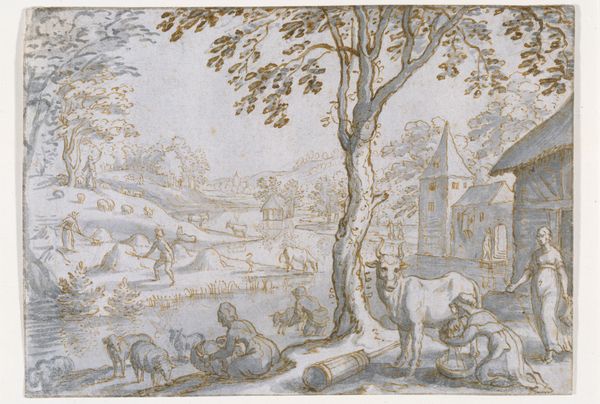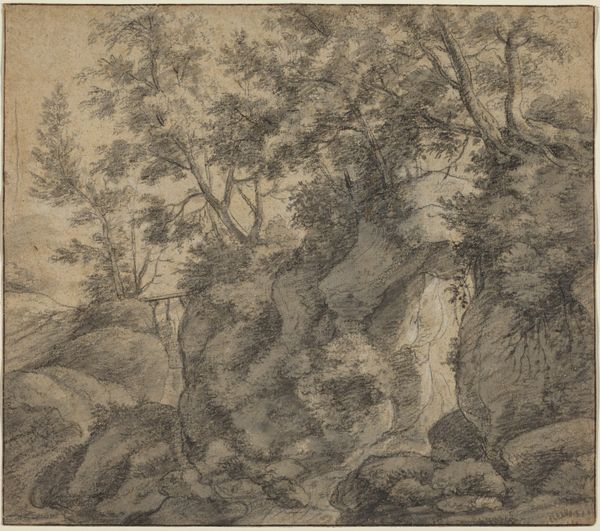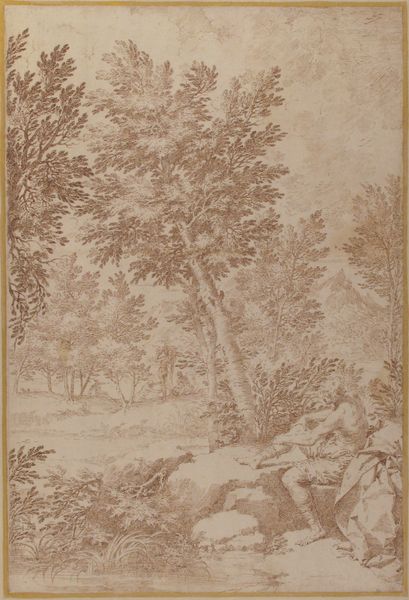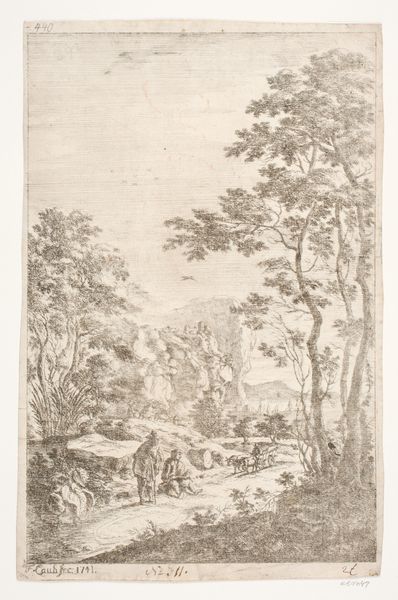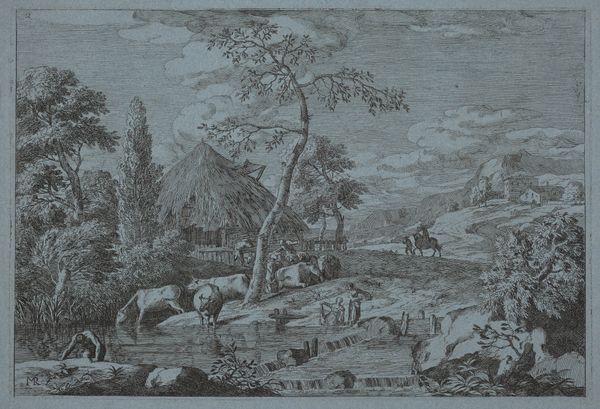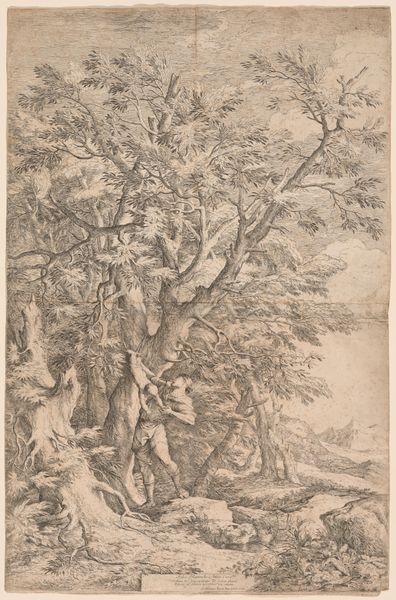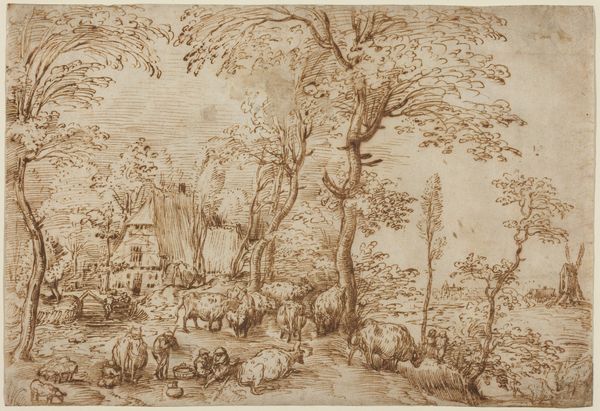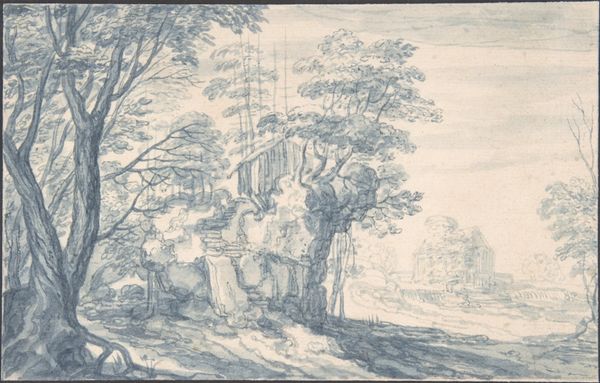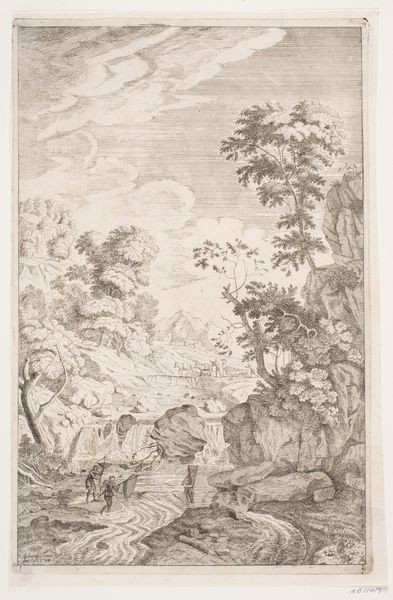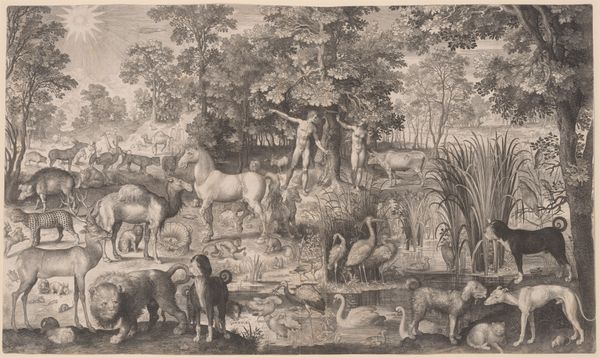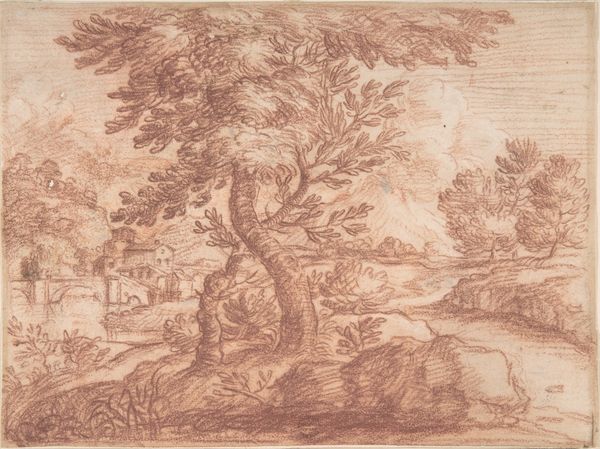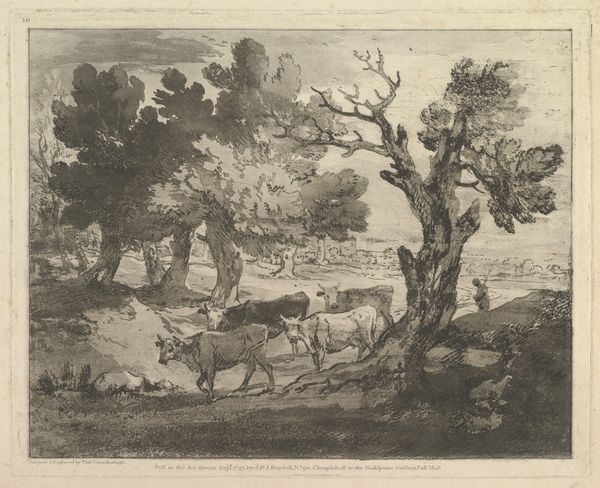
drawing
#
drawing
#
baroque
#
landscape
#
charcoal drawing
#
figuration
#
coloured pencil
#
line
#
history-painting
#
academic-art
#
nude
Dimensions: overall: 52.5 x 37.9 cm (20 11/16 x 14 15/16 in.)
Copyright: National Gallery of Art: CC0 1.0
Editor: Here we have Donato Creti's "Apollo Standing in a River Landscape," dating from the 1720s or 30s. It’s a drawing, mostly browns and tans. I’m struck by the contrast between the detailed rendering of Apollo's figure and the softer focus of the landscape. What historical narratives or contexts inform your understanding of this work? Curator: Good observation. Creti's work needs to be understood within the context of the flourishing academies of art in the 18th century. History painting, often imbued with classical mythology, was considered the most important genre, used to promote civic values. Do you see any hint of those values presented here? Editor: I suppose the nude male form references classical ideals, a sort of heroic depiction...though the scene is so relaxed, the figure isn't engaged in any obvious action. Curator: Precisely. Consider how the choice of Apollo, typically associated with reason and art, contrasts with the sensual depiction of the figure within a "natural," wild landscape. Is this landscape a real one or an idealised setting? Editor: Definitely idealized. There's a timelessness about it, as though it could be anywhere, anytime. Perhaps it speaks to the way powerful patrons wanted to see themselves reflected in art – idealized, serene, and timeless? Curator: That’s a crucial point. The political authority of the patrons often shaped how such idyllic scenes were constructed and, indeed, *consumed* by the public. The painting served less as a reflection of raw power, and more to present their control in a palatable, aesthetically pleasing way. It’s a careful construction of soft power, really. Editor: I never thought of it that way – as a demonstration of 'soft power.' I guess I saw it as just a pretty drawing. This has certainly changed how I'll approach similar works! Curator: Exactly! Always question who benefits from these idealized depictions, and what socio-political structures they reinforce. It reframes how we engage with images.
Comments
No comments
Be the first to comment and join the conversation on the ultimate creative platform.

